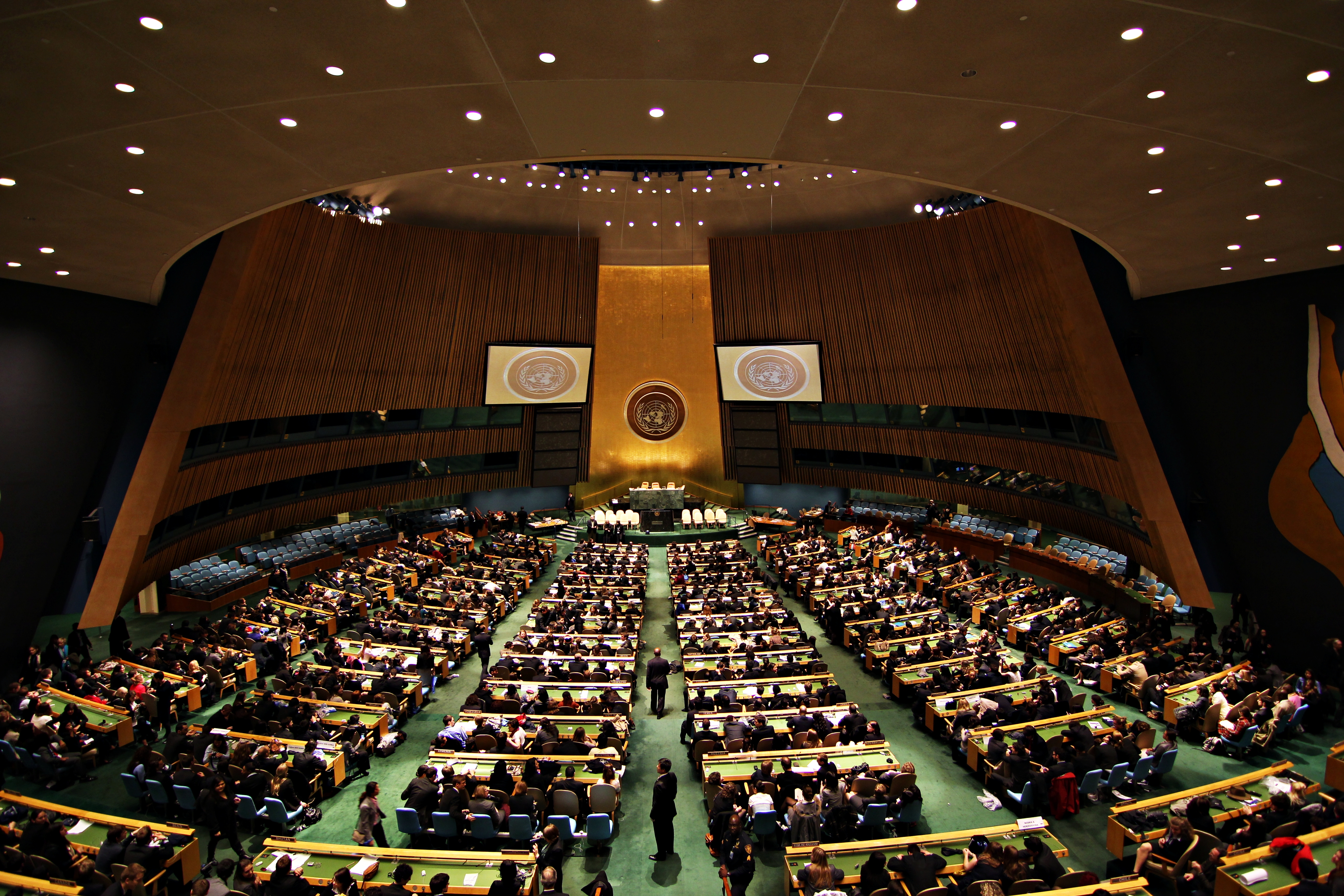
Meet the General Assembly

Photo Credit: Basil D Soufi (CC-BY-SA 3.0)
It is not the Soviet Union or indeed any other big Powers who need the United Nations for their protection. It is all the others.
Dag Hammarskjöld
When a news article mentions that the United Nations is meeting, it almost certainly means the General Assembly. The General Assembly is the United Nations’ main deliberative body, responsible for setting the policy, direction and budget of United Nations. Its basic structure is simple: all United Nations Member States are members of the General Assembly. Each State has one vote. A simple majority is sufficient to pass all but the most important resolutions.
This membership creates a very different dynamic from the Security Council, ECOSOC or Trusteeship Council. The General Assembly is large: no single State or group of States is able to dominate the body, making coalition-building critical to the passage of resolutions. Often, these negotiating blocs form around geography, though not always. The Group of 77 (G-77) was formed in the 1960s to represent the interest of developing countries. Throughout the Cold War, the Non-Aligned Movement (NAM) sought to advance the interests of countries aligned with neither the United States nor the Soviet Union. These two overlapping groups are large enough that they can significantly influence the General Assembly’s deliberations.
The General Assembly’s has a broad mandate. Each year, it must approve a number of budgetary and administrative resolutions to support the United Nations’ continued operations. Beyond those issues, Member States can propose resolutions on almost any topic. In a typical year, the General Assembly might cover everything from smoking bans in UN facilities to mine removal and pharmaceutical patent protections. This broad agenda is managed by dividing the General Assembly’s work into committees, which focus on specific areas: security and disarmament issues (First Committee); economic and financial issues (Second Committee); social, humanitarian and cultural issues (Third Committee); special political issues (Fourth Committee); administration and budget (Fifth Committee) and legal issues (Sixth Committee).
The General Assembly is also much maligned. Some critics complain that it represents an all-powerful world government, yet these critics miss a crucial fact: no General Assembly resolution is binding on Member States. Member States must cooperate for a resolution to have an effect. Others argue that the General Assembly’s lack of enforcement powers make it utterly toothless and unable to resolve any controversial issues.
Both of these critiques have some validity, but they also miss the General Assembly’s true purpose. Most simply, the General Assembly is a place for ongoing, global dialogue. In its chamber, Member States have a place where they can find common ground and reach agreement on the plights that face humanity. While its lack of enforcement power means that the General Assembly moves slowly, it pushes Member States to seek global support and consensus. While not every General Assembly discussion or resolution changes the world, many do.
In 1967, Malta’s Ambassador to the United Nations pleaded with the General Assembly to address the increasing pollution and international conflict in the world’s oceans. That speech led to the creation of the Convention on the Law of the Sea, now a critical international treaty. In that case, a non-binding set of discussions led to the creation of a new, binding legal instrument.
And while the General Assembly cannot force budget priorities onto States, it can convince them. Over the course of the 1990s, Member States sought to coalesce around development goals that could serve as priorities for national governments and the international community. By the time of the Millennium Summit in 2000, the General Assembly was able to agree on goals, now known as the Millennium Development Goals. While it may have taken a decade to achieve, these discussions have ultimately changed how the world talks about and prioritizes poverty eradication and human development around the world. The adoption of the Sustainable Development Goals in 2015 builds upon that progress, creating an even more ambitious vision.
This cultivation of dialogue is difficult. It is often unclear whether or not it will succeed. When the United Nations convened in Jomtien, Thailand in 1990 to discuss international cooperation in education, few believed that something like the Millennium Development Goals was possible. Within a decade, the governments of the world had reached a formal agreement.
Sometimes, the hours of dialogue in the General Assembly is just talk. But often, that dialogue is part of a march toward action. We may just not know it yet.
Keep Up With The Accords
More to read
The AMUN Accords is a premier resource for fact-based Model United Nations simulations. We are always looking for new contributors. Want to write for the AMUN Accords? Check out out the submission guidelines and then get in touch!




